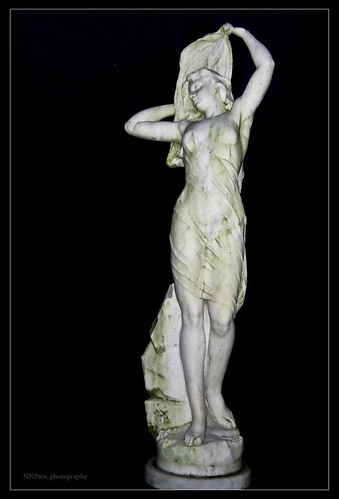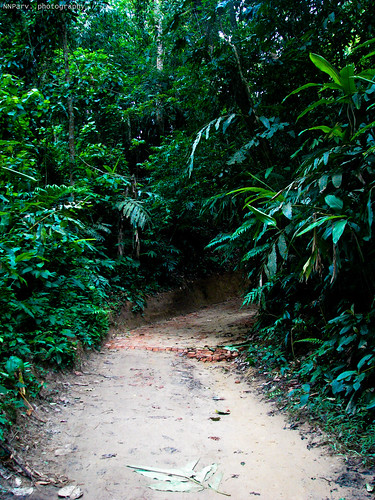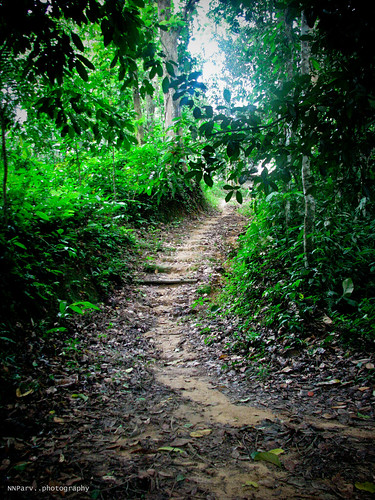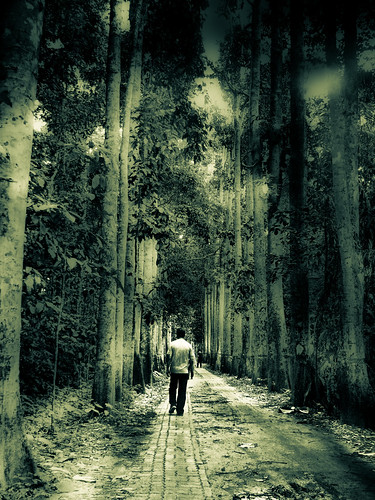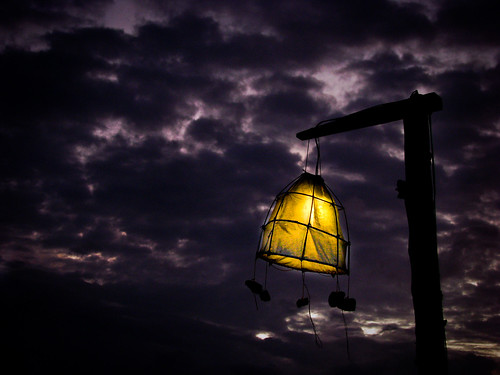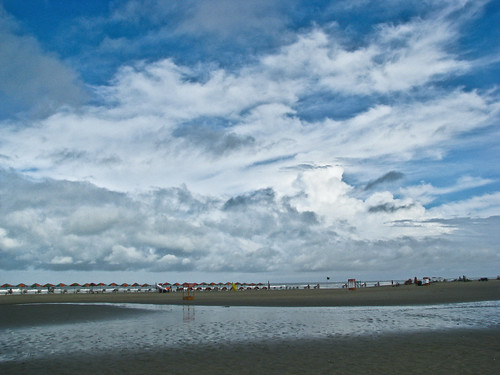September 26, 2009
Cats Eye Showrooms
Mansur Bhaban
72, New Elephant Road Dhaka
Cats Eye
158, Gulshan avenue
Dhaka
Cats Eye
T-Stall
Minita Plaza
54, New Elephant Road, Dhaka
Cats Eye
Minita Plaza
54, New Elephant Road Dhaka
Cats Eye
Rapa Plaza
House # 1, Road # 16
Dhanmondi R/A, Dhaka
Cats Eye
Rupayan Golden Age
99, Gulshan Avenue Dhaka
Cats Eye
Concord Twin Tower
Chemelibagh Dhaka
Cats Eye
399 & 322 Mascot Plaza
107/A, Sonargaon Road
Sect # 7, Uttara Dhaka
Cats Eye
Bashundhara City
Phanthapath, Dhaka
Cats Eye
R.A.K. Tower
Jashimuddin Road, Uttara, Dhaka
Cats Eye
North Tower, Sector # 7
Uttara Model Town, Dhaka
Cats Eye
Asgar Square
Barudkhana Point
Zindabazar, Sylhet
Cats Eye
1147/A, East Nasirabad
CDA Avenue
IFCO Complex, Chittagong
Cats Eye
Sanmar Ocean City
Nasirabad, Chittagong
Cats Eye
19, Biponi Bitan
New Market Chittagong
Web: http://www.catseye.com.bd/index.php
August 6, 2009
Natore - Uttara Gonobhaban
Dighapatia Rajbari was made 'Dighapatia Governor House' on 24th July, 1967 by Mr. Abdul Monem Khan. Later, after our country's independence, Bangabandhu Sheikh Mujibur Rahman declared the Dighapatia Governor House as Uttara Gonobhaban on 9th February, 1972.
The bathrooms are entirely made of marble stone. A big stone-made bathtub is kept in the verandah for visitors to take a look. The curator informed us that Raja DayaRam was the first king and his last descendant was Raja Pratibhanath Roy. The Rajbari also has a dance room where dancers danced to the tune of instruments to entertain the kings and their guests. Needless to say, the room is very spacious and accommodated with couches so that the Rajas could comfortably rest and enjoy the performance.
One eye-catching thing was the upside down fan, the inverse form of today's table fan, and the blades of which point downward. This machine was powered by kerosene oil. There are also card rooms, a dining room with two green colour candle stands hanging from the ceiling and most significantly the room of "The Royal Court". Here the kings discussed different matters with the members of the court. The famous chair of the king symbolizes a person who is not ordinary but destined to be someone who is much more than ordinary.
The dynasty of kings and queens exists no more but what they have left behind still amazes us creating everlasting impressions on our hearts.

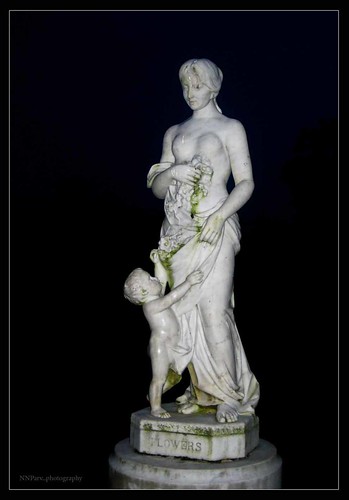
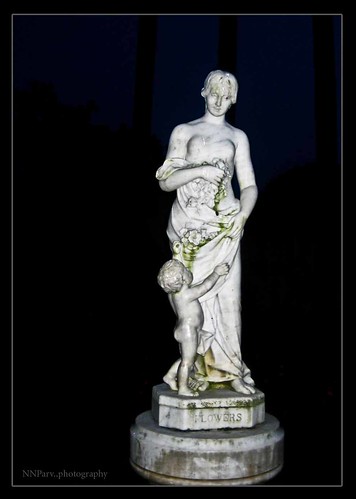
Lawachhara Rain Forest
Lawacherra Rain Forest is one of the important & well-reserved forests in Bangladesh. Here visitor may see gibbons swimming through the trees and birds like bee-eater owls parrot. It is a good habitant of Deer, leopard, wild chicken, squirrel, and python. Don't miss it especially if you are bird watcher. The terrain is hilly and vegetation is fairly thick. Only one rare Chloroform tree of Asia is prime attraction.
Khasia & Manipuri is two important ethnic-tribe live here. Manipuri is famous for its rich culture especially for dancing, singing. They are also famous for their traditional weaving. You can buy their handicrafts exquisitely woven woolen. Shawls, Sharee, Napkin, bed-cover and some should a bags. It is known as colorful community. Khasia tribe is famous for their betel leaf cultivation. They make their villages high on hilltop in deep forest and so far from town. It is like "A Piece of Paradise". Certainly it will please you.
Pineapple cultivation - Sweetest and best quality pineapples grown here in Bangladesh. Pineapple is really a greatest offer of summer but now it is cultivated round the year. So, you can enjoy the juicy summer fruit in any time coming to its real field.
Srimongal
The indigenous people like Khasia, Monipuri, tripura and Garo are the mainstream of Adibashi (aboriginal) who are still untouched. The classical Monipuri cultural excellence has acquired world wide reputation.
Place to stay in Srimongol:
Nishorgo Nirob Eco-Cottage (3 rooms) Radhanagar, 20 minute rickshaw ride from train station; mob: 01715 041207; Nishorgo’s flagship project of creating ‘eco-cottages’ began here at this small village just a few kilometers outside of Srimongol and a 45-minute walk from the Lawachara rainforest. The concept was to employ locals to house visiting guests and provide some fo the capital necessary to build facilities for them. At the Nirob eco-cottage, there are three rooms. One is housed in a standard concrete building but the other two are bamboo huts nestled in a lemon grove tucked away at the back of the property, with a small flowing stream behind it, perfect for dipping on hot days. Needless to say, this is a secret spot that won’t remain hidden for long. Calling ahead for booking is essential. The proprietor’s wife is an excellent cook as well. The bamboo hut costs Tk1,000 per night and includes breakfast. Facilities include hot water on request, meals, and a power supply system that can run computers, chargers and lights even when the power goes out. Mr. Shamsul is the one you want to speak with.
Nishorgo Nandan Eco-Cottage (2 rooms) Uttar Baligaon, Karamat Nagar; mob: 01711 731551; The second of Nishorgo’s eco-cottages, offering similar facilities but not the beautiful bamboo hut. If Nirob is already booked this would be a great choice as well. Facilities are the same: two double-bedded rooms with attached bath and basic food served (Tk1,000). Mr. Anando is the proprietor here.
August 5, 2009
Cox's Bazar, the world longest natural sea beach

Cox's Bazar, the world longest natural sea beach enriched with miles of golden sands, towering cliffs, surfing waves, rare conch shells, colorful pagodas, Buddhist temples and tribes, delightful sea-food--this is Cox's Bazar, the tourist capital of Bangladesh. Having the world's longest (125-kilometers) beach sloping gently down to the blue waters of the Bay of Bengal, Cox's Bazar is one of the most attractive tourist sport in the country. There are also a few very old wooden Buddhist temples at Ramu, a few kilometers from Cox's Bazar, well worth visiting. Located at a distance of 152km south of Chittagong, the leading seaport of Bangladesh, Cox's Bazar is connected both by air and road from Dhaka and Chittagong. A drive to Teknaf, which is the southernmost tip of the mainland of Bangladesh, is a memorable journey. A day trip to either Moheshkhali or Sonadia, the deltaic islands nestled among the gentle waves of the Bay of Bengal, will also be really interesting. Other attractions for visitors are conch shell market, tribal handicraft, salt and prawn cultivation. Besides, the longest sea-beach, Cox's Bazar and its adjoin areas have a lot of things to see and places deserve visit by the tourists.
Cox's Bazar, the world longest natural sea beach
Promoting Cox’s Bazar as the Longest Unbroken Sea Beach
Promoting something in the age of globalization may be thought as a common phenomenon. Almost nothing goes without promotion around us. Still, one would wonder why to promote something like a sea beach, a unique ecological resource of the world. A spot of beauty and health like Cox’s Bazar may not need be promoted. But, such a resource and place of attraction as well need be promoted. People across the world now a days have lot to do throughout their working hours. Time constraint and workload have narrowed the scope of men to learn. But the thirst to explore and learn is very much alive. Their needs keep them busy, their demands get fulfilled by quick marketers, their thirst for knowledge is quenched by the materials at their reach. Yes, a mutual exchange of the demand and the means to satisfy them have come at terms with each other. We go for satisfying our needs but there are agents to reach us as well. Therefore, in the same age when channels are there to go to and to reach the market vice versa one need to think twice before deciding the way one would a century before.
Promoting a cause in the twenty first century is not the same as it used to mean a century before when it would have to deal with patriotism, ethical viewpoints, emotional enthusiasm and uplifting the sense of pride as such. In an era of marketing and globalization it tends to encompass the issues of business, economics, human welfare and going for a sustainable development. And all these uphold a national standard at the top. If we consider one or two unique features that our land has and which are famous around the world as places of natural wonder are the Sundarbans and the longest unbroken Sea beach in the world Cox’s Bazar. But, in the era of business and promotion we need to highlight our natural resources in order to bring businesses for our country. Tourism is such a field where Bangladesh as a naturally beautiful country has a lot to explore its prospects.
All the countries of the world now a days are going for massive promotional activities in various media and in diverse ways. These countries have realized the need to join in the trend of globalization. They have a positive attitude toward taking the challenge of getting along the world community while it is moving toward a global village, they have also realized that being globally viable only means becoming locally / nationally stable and well off. It only upholds the pride of a nation. In an era of business and communication the fronts that the countries have to win on are the economic viability, promoting national causes by attracting the attention of the global community toward the resources of its own and above all sustainable development.
Some considerations to Promote Cox’s Bazar
Following points in this regard may be considered:
1. Using media: introducing the media personnel from the print and electronic media. The National Tourism Board (BPC) should engage itself to invite personnel from print media to highlight the grandeur of the destination as a natural wonder.
Government should advertise in the widely circulated international magazines including the famous tour magazines with glossy illustrations. The aesthetic view should never be lost sight of.
2. The prospects of electronic media should be explored. The international entertainment and news channels should be used for mass advertisement along with lucrative rhetoric. Slogans may be developed for the purpose.
3. The Tourism Board can arrange programs in popular satellite channels at attractive TV slots to highlight the beauty and grandeur of the sea beach. The programs should be furnished with attractive videos exhibiting mastery in the aesthetic sense of colour, tones and sound. As they have made in Vienna. We have seen quality documentaries of Ronald Halder and A. Masud Choudhury Pitu here.
4.The Tourism Board along with the airlines can jointly work for this. Private sector can be involved with the effort and their involvement can be treated as an observance of corporate social responsibility.
5. The front desks of the airliners may have posters, booklets and souvenirs exhibiting the beauty and other aspects of the sea beach.
6. The diplomatic missions of Bangladesh may go for arranging seminars, shows etc to promote the cause.
7. Non Resident Bangladeshis may be involved in the process of promotion.
8. The airlines should develop seasonal packages for the tourists to attract them to have trip to the sea beach. Frequent flyers may be given bonuses or discounts.
9. The airliners can jointly work with the tour operators to arrange tourism fairs abroad in order to develop markets.
10. Celebrities may be involved to work as ambassadors to promote the cause.
11. All the agencies involved in the tourism sector should go for publishing in the web. Portals of different brands as G – mail, Yahoo!, Hotmail can be used for advertisement. The front pages of the search engines can be hot spaces for advertisements. Sharing features social networking medias as Facebook, Orkut, Myspace, Hi – 5 may be used to induce world community to know and get interested to the destination. This practice is seen in the international web dailies as The New York Times, The Guardian, International Herlad Tribune. Facilities of mailing should be incorporated with the sharing features in the web.
12. Videos can be uploaded in e – snips and YouTube.
13. The promoting airliners, tour operators and the travel agencies may be given subsidies under a well chalked out definition.
14. The stakeholders involved in the tourism sector should include renowned experts.
15. International competitions regarding the beach may be introduced with lucrative prizes as has been done in the case of the Great Barrier Reef.
16. Walking and other sports centering the beach may be arranged. An international walking event may be arranged yearly and named: Walk In The Longest Unbroken Beach.
A marathon may be introduced named: The Cox’s Bazar Marathon. Special emphasis may be put including developing packages for internationally acclaimed walking competitors.
Other sports tournaments as beach volleyball, beach cricket, beach racing by motor bikes, surfing which would be broadcast in international media.
17. Artists from home and abroad may be invited to make sand sculptures in the beach.
18.UNICEF may be convinced to declare a day to observe The Sea Beach Day. On the eve of this day mass awareness may be created among the population of the world so that they realize the value of preservation of the sea beaches. By highlighting the Cox’s Bazar the cleanliest and the longest beach to explore we can promote the cause. Programs as Cleaning The Longest Sea Beach may be arranged involving celebrities who are UN Ambassadors.
19.The National Tourism Board may announcing lucrative prizes for tourists, photographers, documentary makers who can highlight Cox’s Bazar as the longest unbroken beach.
20. Entertainment facilities including barbecue, casino, motorized and non motorized vehicle drives around the beach areas, skilled tourist guides may be developed and utilized to make positive impression in the incoming tourists so that these tourists themselves promote Cox’s Bazar as an attractive destination.
21. The sea beach needs to be highlighted as a secure destination in terms of availability of law enforcing agencies. The government should take necessary steps to ensure security for the tourists.
History
The name Cox's Bazar/Bazaar originated from the name of a British East India Company officer, Captain Hiram Cox who was appointed as the Superintendent of Palonki (today's Cox's Bazar) outpost after Warren Hastings became the Governor of Bengal following the British East IndiaCompany Act in 1773. Captain Cox was especially mobilized to deal with a century long conflict between Arakan refugees & local Rakhains at Palonki. The Captain made significant progress in rehabilitation of refugees in the area, but had died (in 1799) before he could finish his work. To commemorate his role in rehabilitation works a market / bazaar was established and was named after him as Cox's Bazaar (market of Cox). Cox's Bazar thana was first established in 1854 and a municipality was constituted in 1869.
After the Sepoy Mutiny (Indian Rebellion of 1857) in 1857, the British East India Company was highly criticized & questioned in humanitarian ground specially for its Opium trade monopoly over the Indian Sub-Continent. However after getting dissolved on January 1, 1874, all of company's assets including its Armed Forces were acquired by the British Crown. After this historic take over, Cox's Bazar was declared as a district of the Bengal Province under the British Crown.
After the end of British rule in 1947, Cox's Bazar remained as a part of East Pakistan. Captain Advocate Fazlul Karim, the first Chairman (after independence from the British) of Cox's Bazar Municipality established the Tamarisk Forest along the beach to draw tourist attention in this town and also to protect the beach from tidal waves. He also donated many of his father in law’s and his own lands for establishing a Public Library and a Town Hall for the town. He was inspired to build Cox's Bazar as a tourist spot after seeing beaches of Bombay and Karachi, and one of the pioneers in developing Cox's Bazar as such. He founded a Maternity Hospital, the Stadium and the drainage system by procuring grants from the Ford Foundation and Rockefeller Foundation through correspondence. Mr. T. H. Matthews, the principal of the Dacca Engineering College (1949-1954) was his friend who had helped him in doing this. Engineer Chandi Charan Das was the government civil engineer who had worked on all these projects. In 1959 the municipality was turned into a town committee. In 1961 the erstwhile Geological Survey of Pakistan initiated investigation of radioactive minerals like monazite around the Cox’s bazar sea-beach area and a number of precious heavy minerals were identified the same year.
Submarine Cable Landing Station
After the independence of Bangladesh Cox's Bazar started to get the administrative attention. In 1972 the town committee of Cox's Bazar was again turned into a municipality. In 1975, The Government of Bangladesh established a pilot plant at Kalatali, Cox's Bazar to assess the commercial viability of the heavy mineral content in the placer deposits of the area with the cooperation of the Australian Government. Later, in 1984 Cox's Bazar subdivision was promoted to a district and 5 years later (in 1989) the Cox's Bazar municipality was elevated to B-grade. In 1994 (jobs) the Marine Fisheries and Technology Station (MFTS) was established at Cox's Bazar. MFTS is a research station of Bangladesh Fisheries Research Institute (BFRI) headquartered in Mymensingh. The station covers a land area of 4 hactor and is equipped with 5 specialized laboratories, and one indoor and one outdoor cistern complex. In April 2007 Bangladesh got connected to the submarine cable network as a member of the SEA-ME-WE-4 Consortium, as Cox's Bazar was selected as the landing station of the submarine cable.
Geography and climate
The climate of Bangladesh is mostly determined by its location in the tropical monsoon region: high temperature, heavy rainfall, often-excessive humidity, and distinct seasonal variations. The reversal of the wind circulation between summer and winter is another important feature of the climate of the country.[12] The climate of Cox's bazar is mostly similar to the rest of the country. It is further characterized by the location in the coastal area. The annual average temperature in Cox's Bazar remains at about a maximum of 34.8 °C and a minimum of 16.1 °C. The average amount of rainfall remains at 4,285 mm.
Economy and development
Tourist attractions near the town
Aggmeda Khyang: a large Buddhist monastery, and a place revered by around 400,000 Buddhist people of Cox’s Bazar; and the Chittagong Hill Tracts. The main sanctuary is posted on a series of round timber columns. It has a prayer chamber and an assembly hall along with a repository of large and small bronze Buddha images and a number of old manuscripts.
Ramu: about 10 km from Cox’s Bazar, is a village with a sizeable Buddhist population. The village is famous for its handicrafts and homemade cigars. There are monasteries, khyangs and pagodas containing images of Buddha in gold, bronze and other metals inlaid with precious stones. One of the most interesting of these temples is on the bank of the Baghkhali river. It houses not only interesting relics and Burmes handicrafts but also a large bronze statue of Buddha measuring thirteen feet high and rests on a six feet high pedestal. The wood carving of this khyang is very delicate and refined. The village has a charm of its own. Weavers ply their trade in open workshops and craftsmen make handmade cigars in their pagoda like houses.
Dulhazra Safari Park: This safari park is an extension of an animal sanctuary located along the Chittagong-Cox's Bazar road about 50 km from Cox's Bazar town. The sanctuary itself protects a large number of wild elephants which are native to the area. In the safari park there are domesticated elephants which are available for a ride. Other animal attractions include lions, Bengal tigers, Crocodiles, Bears, Chitals and lots of different types of birds and monkeys.
Risks and Hazards
Tourists and accommodation
Places of interest along the beach
Himchari: It is about 32 km. South of Cox's Bazar along the beach, a nice place for picnic and shooting. The famous "Broken Hills" and waterfalls here are rare sights.
Laboni Beach: This is the main beach of Cox's Bazar and is considered the main beach due to the fact that it is closest to the town. Close to the beach, there are hundreds of small shops selling souvenirs and beach accessories to the tourists.
Himchari: Located about 18 km south of Cox’s Bazar along the sea beach, is a nice place for the picnic and film shooting. This picnic spot is famous for its waterfalls. The road to Himchari runs by the open sea on one side and hills on the other which makes the journey to Himchari very attractive. Its another attraction is the Christmas tree.
Enani Beach: Located 35 km south of Cox’s Bazar, this white sandy beach is located within Ukhia Thana. This beach is famous for its golden sand and clean shark free water which is ideal for sea bathing. Most tourists prefer to come down here for relaxing because it is free from the crowd of tourists that is usually seen at the Laboni beach.
Mineral content in beach sand
Other tourist attractions near Cox's Bazar
Sonadia Island, a small crescent shaped island of only 9 square kilometers, it is 7-km north-west of Cox's Bazar. The western side of the island is sandy and different kinds of shells are found on the beach. Off the northern part of the island, there are beds of window pane oysters. During winter, fisherman set up temporary camps on the island and dry their catches of sea fish. Sonadia Island supports the last remaining part of mangrove forest in southeast Bangladesh. Sonadia's mangroves are distinct from the well-known sunderbans, due to their development in a coastal lagoon setting rather than in a delta. Another attraction of this island is the sight of game birds migrating here in great numbers during the winter seasons.
Teknaf, a place situated by the side of Naf river is the southernmost part of mainland Bangladesh. This also marks the end point of Cox's Bazar beach. Tourists usually come here to have a river cruise along beautiful Naf river, which flows between Bangladesh and Myanmar.
St. Martin's Island, a small island in the northeast part of the Bay of Bengal, about 9 km south of the tip of the Cox's Bazar-Teknaf peninsula. It is the only coral island in Bangladesh. It is about 8 km west of the northwest coast of Myanmar at the mouth of the Naf River. The local name of the island is "Narical Gingira", also spelled "Narikel Janjina/Jinjera", translated from Bangla, meaning 'Coconut Island'. St. Martin's Island has become a popular tourist spot. Three shipping liners run daily trips to the island. They are Kutubdia, Sea-Truck and Keary-Sindbad. Tourists can book their trip either from Chittagong or from Cox's Bazar. The surrounding coral reef of the island has an extension named Chera Dwip. The island is home to several endagered species of turtles, as well as the corals, some of which are found only on this island.
Chakaria: One of most large area in Cox's Bazar.
Bandarban: Bandarban lies three hours away from Cox's Bazaar by bus. The Buddha Dhatu Jadi, the largest Buddhist temple in Bangladesh, located in Balaghata, 4 km from the town, is an excellent place to visit. This Theravada Buddhist temple is made completely in the style of South-East Asia and houses the second largest statue of Buddha in Bangladesh. The waterfall named Shoilo Propat at Milanchari is also an excellent site. In addition, the numerous Buddhist temples, known as kyang in local tongue, and vihars in the town include the highly notable the Rajvihar (royal vihar) at Jadipara and the Ujanipara Vihar. Bawm villages around Chimbuk, and Mru villages a little further off, are also lies within a day's journey from the town. Prantik Lake, Jibannagar and Kyachlong Lake are some more places of interest. And, a boat ride on the river Sangu is also an excellent proposition.
Rangamati: One can reach Rangamati from Cox's Bazar either via Chittagong or Bandarban. Rangamati offers several attractions including local tribal museum, Buddhist temple, tribal markets, hanging bridge and even the palace of traibal kings. The major attraction of the district is Kaptai Lake. It is a man-made lake in the Kaptai upazila of Rangamati District. The lake was created as a result of building the Kaptai Dam on the Karnaphuli River, as part of the Karnaphuli Hydro-electric project. The beautiful view of surrounding green hills has turned the lake into a wonderful spot for boating and cruising.
MadhabKunda Waterfall

From Kulaura rail station its about one hour journey by microbus to Madhabkunda. The journey to Madhabkunda itself is exotic. On the way you can see the greenish beauty of tea garden, the hills and the zigzag road through the hills will increase the joy of your journey. In Madhabkunda you will see the great waterfall – falls of million tons of water form 200ft. height. Big bolder of stones and the black stones in giving a shape of care in Madhabkundu. There is a Parjatan Motel with a good restaurant for accommodation and food facility.
When I last went to Madhabkunda, it was July. My suggestion is, if you want to enjoy the complete beauty then please go in rainy season. I went there from Srimongol, by Microbus. It takes almost 2 hours to reach there.
There is also a district council Bunglow for night stay. Here you can enjoy adventurous feelings to stay in a jungle. All you need to have a prior booking for the bunglow from Moulvibazar Zilla Parishad office.


| |
July 23, 2009
Woman in Bangladesh

With greater acceptance, there are now a wider range of career choices available to women. Let's take a look at some of these.
Hospitality
After generations of feeding hungry hordes, the art of hospitality comes naturally to the fairer sex. For those who have a knack for cooking, but not enough finances to really push it forward, one can start small by taking orders for food items for special occasions.
If you possess the location for it, small cafes are great investments. As long as the coffee keeps flowing, a few light snacks and a cosy atmosphere is all you'll need. In this busy city, people will be glad to find a quiet place to unwind.
Finally, if you have the dosh for it, restaurants have great potentials, although they also come with great risks. There's the problem of finding the right location, selecting the right menu, creating a proper ambience, hiring staff, finding an attractive 'hook' or gimmick that sets you apart from the half-dozen other eateries that might be located right on the same road, and there's still no guarantee that you'll float. But if you can get it up and running, though, the dividends could outweigh the risks.
Advertisement and event management
Watch a mother try to convince her child to eat his vegetables, and you know that women have a talent for persuasion. This could be channeled towards fields like advertising. To begin with you must evaluate your specialisation and your ability to deliver with professionalism. In a global environment you will need to create an edge over others. But the key would be the focus on understanding the market; whether you're selling a product, or promoting a brand, you have to know who your buyers are, and what they want. Pushing your brand or product also requires persuasive skills, and one needs to have a lot of confidence and awareness to succeed in this field.
Other than pushing products and brands, the goal could also be raising awareness, be it about an issue, or for a charitable cause, and this is where event management comes in. For these, you bring in the same kind of energy and creativity that you would in ensuring your party makes your neighbours green with envy. Most women are naturally good at organizing such 'do's and drumming up support for their causes, and so would shine in this field.
Publishing
Books: Almost a hundred years ago Begum Rokeya Sakhawat Hussain was able to publish her book- Sultana's Dream. She was fortunate. It was a groundbreaking event in the history of Bengali literature. As a woman entrepreneur you could support this admirable cause of publishing. Today, other women writers work and contribute favourably to social issues, while at the same time deriving far reaching economic benefits. It would be an ideal stepping stone in the world of publishing. I believe there should be a great deal more women writers sweeping the domain of the literary world. Our culture, language, people, and environment could use more gender perspective. You could publish fiction, poetry or drama that has specific artistic value, or cook books, travelogue, or even books on motivation or homes and gardens that has found enthusiastic readership.
 Magazines: This is a business where women have shown leadership with a definite direction. As in the past, this business can target a specific women-centric audience or a larger general one depending on the focus of the work. It is evident especially in Bangladesh that women have shown a more sensitive regard for their own issues than their male counterparts. The scenario, however, has changed somewhat as there is considerable growth in the business and larger publishing houses having taken initiatives with gender specific examinations. Lifestyle magazines with a larger scope for action have done particularly well. In order to launch such a business you must bear in mind that sustenance cannot be accomplished on the sales of the magazine but rather depends on the paid advertisement in the publication. The magazine must divulge on current issues. That is the key to any success.
Magazines: This is a business where women have shown leadership with a definite direction. As in the past, this business can target a specific women-centric audience or a larger general one depending on the focus of the work. It is evident especially in Bangladesh that women have shown a more sensitive regard for their own issues than their male counterparts. The scenario, however, has changed somewhat as there is considerable growth in the business and larger publishing houses having taken initiatives with gender specific examinations. Lifestyle magazines with a larger scope for action have done particularly well. In order to launch such a business you must bear in mind that sustenance cannot be accomplished on the sales of the magazine but rather depends on the paid advertisement in the publication. The magazine must divulge on current issues. That is the key to any success.
Journals: There could be more journals on specific subjects. It is a great educational tool. Although fast losing its relevance in the era of electronic media where the Internet plays a significant role, art, industry, trade, medical, educational and other related subjects of serious magnitude could be updated and put forward through journals.
Hair and beauty
Traditionally, beautification has always been seen as a woman's prerogative, one of those feminine things that could be taken for granted. With so much riding on presentation these days, people in the professional sphere have begun to take their appearance very seriously, thus providing incentive for the emerging beauty industry. We have more beauty pageants now, more magazines, more models and fashion shows, all of which has created a growing demand for the hair and beauty industry.
We see spas and beauty parlours mushrooming up around the city, offering all kinds of personal grooming services and treatments. With the clientele becoming increasingly well-informed, the industry is under pressure to raise the quality of its services, so this field, as well as growing in importance, also requires intensive technical training. The need for such skill-development programs has profound implications for the industry. This should be further investigated.
Academic Institutions
Schools: Customarily the teaching profession for women has been embraced positively by our patriarchal society. In the past two decades we have found many schools run and managed by women. The success story of all these women should inspire many more to consider an entrepreneurial activity in developing an educational establishment. I believe there will always be a demand for better institutions.
One could start with preschool activity and work to a primary level. She could slowly build the foundation for a high school. In order to address specific needs of the age based requirements of key stage programmes you must be trained to attain good results and also train the faculty. On many occasions we find inexperienced teachers with colossal responsibilities.
It is the responsibility of the management to provide high standards. The business of teaching is a venerable trade that should always be regarded as a commendable contribution to the society. Educating is a sensitive activity and deserves high regard only if you are providing excellent service worthy of children's needs. Dedication and professionalism is needed to carry out such a venture. If done appropriately there is a potential for exceptional achievement.
Women have the potential for being solid entrepreneurs. Given the opportunity they can be creative and determined executors. We would all like to see more women working in an open market environment that encourages development and financial growth for individuals. A country must progress with all its national components. The women folk are very much part of the apparatus. Women need to gear up to the next level of economic emancipation. They should not just be players but rather take on the challenges of decision-making capacity. They should be involved in more complex planes of business activities. I think we can all agree that their right to civic and social liberty shall always lie with their capacity to pursue monetary empowerment.
Collected from The Daily Star.
Photo: Zahedul I Khan
Destination Bangladesh
 A country of pristine beaches, national parks, ancient palaces, mosques, temples, churches and wildlife, Bangladesh is truly one of the most delightful places to visit. Bangladesh enjoys a moderate tropical climate and as a vacationer, you could go riding on the secluded beaches or enjoy an exhilarating trek among the cloud-reaching mountains at Bandarban, as well as a wide variety of other options to choose from when making a travel plan.
A country of pristine beaches, national parks, ancient palaces, mosques, temples, churches and wildlife, Bangladesh is truly one of the most delightful places to visit. Bangladesh enjoys a moderate tropical climate and as a vacationer, you could go riding on the secluded beaches or enjoy an exhilarating trek among the cloud-reaching mountains at Bandarban, as well as a wide variety of other options to choose from when making a travel plan. You could stay in either a hotel or motel. If however, you were planning to stay for a longer time with friends or family, it would be ideal and more cost-effective to rent out a guesthouse or a flat.
Cox's Bazar- certainly one of our major attractions- is a mesmerising site, which is also the longest stretch of natural beach in the world and has enchanted travellers from across the globe for a long time. The magnificent sights and sounds of Cox's Bazar is a fascinating, awe-inspiring experience.
Sundarbans, "the beautiful forest” is undoubtedly another must see. Here, the land and the water meet in spectacular fashion. The wildlife presents many a spectacle. If you're really lucky, you may come across a Royal Bengal Tiger swimming across the streams or crocodiles basking on the riverbanks. For the horticulture enthusiast, the lover of nature, the poet and the painter, this mass of green forest provides a variety of wonders for which they all crave.
The capital city, Dhaka is friendly and relatively clean in the posh areas. There are many sights to attract visitors. The most essential sights are the Lalbagh Fort, the National Assembly Building, the Baitul Mukarram Mosque, National museum, Savar Sriti Shoudho, Shahid Minar, botanical gardens, the zoo and many more significant places to enjoy.
You can get cheap deals on flights to Dhaka throughout the year, and once there, the cost of living is considerably low, making Dhaka, and Bangladesh as a whole, amongst the best value destinations in the world.
It would be a good idea to move around Bangladesh with a constant vehicle, so renting a car is a good option. There are many companies offering car rental and hiring services. You could negotiate your rates with them.
Get help from a travel agency to chart out your Bangladesh vacation. They would be in a better position to plan a Bangladesh travel diary for you.
Winter in Bangladesh is a most comfortable season and therefore the ideal time for a vacation.
By Mohammad Shahidul Islam
Photo: Syed Zakir Hossain

Open T Bioscope
Stepping into the shop, you will be engulfed by its warmly illuminated interior. The bold, warm colours on the wall and the dusky lighting rivet a jubilant spirit of fashion.
Open T Bioscope has been creatively designed to embodythe essence of traditions. Rather than Barbie doll mannequins, the shop has customised figurines, keeping local clay dolls in mind, so that every Bangali girl can familiarise oneself with it.
Open T Bioscope is the brainchild of two vibrant architects- Muslima Nazneen Khandakar and Suriya Zabin. The shop came into being with a view to setting up a common platform where ideas can be toyed with playfully and nurtured into reality. It serves as a stage for rising designers to showcase their creative experiments.
The shop is artistically set apart into two distinct wardrobes - Sultana and Bibiana - carrying clothing lines, and Shaheb Babu Boithokkhana- a room with crafty, wooden interiors showcasing decorative household accessories.

The product line caters to two different styles; one focusing on the everyday, casual and to some extent formalwear, and the other focuses on a glamorous clothing line designed exclusively for special occasions. “Sultana” is designed keeping the preferences and tastes of young vibrant females in mind, and “Bibiana” is geared towards the penchants of females in the mature age bracket.
For fatuas and shalwar kameez that can be used as formal or everyday wear, the fabric used is mainly cotton, keeping in mind the comfort factor. The wardrobe changes fabrics with changing seasons.
The summer line mainly consists of cool colours like lemon green, pistachio, bright almond, lilac and ocean green matched with contrasting dupattas and shalwars. The shalwar kameez are available unstitched and also prêt-e-porter. You can also buy creatively designed fatuas or make a three-piece from its own matching centre. The prices of fatuas are from TK 400 onwards.
The “Bibiana” collection consists mainly of saris, casual and formal. The fabric is mainly cotton, endi-cotton, endi-silk adorned with colourful hand-paint, spray paint and glittery danglers at the borders. Vegetable dyed saris are one of the exclusive picks of the shop. The saris are displayed in their entirety, opening up the whole work done on the fabric.
The most interesting section of the shop is “Shaheb Babu Boithokkhana”, a wooden panel consisting of three stair steps. At the very bottom, customers can sit and try on ornaments. The middle stair consists of household materials such as hand-painted kathas, pillows in creative shapes like dice, envelope, drum, vegetable dyed bed sheets, silk bed sheets, etc. The very last stair leads to the trial room.

This part of the store is created to give the customers a vibe of comfort as if in their own boithokkhana (living room), where they can have a friendly chat, select the dress materials, try the ornaments on, etc.
Adds Muslima Nazneen, “Open T Bioscope is not aimed at making profit, it is rather aimed at bringing out the creative roots and nurturing them. There are lots of talents who don't get to steal the show due to lack of a proper platform. Open T Bioscope is that platform for them; a platform for any and every kind of artist/ designer to host their creative products. I want them to play with their ideas and that's exactly why I named the shop Open T Bioscope, to play away with their creativity just like the childhood song: Open T Bioscope; Nine ten teiscope; Sultana, bibiana; ,shaheb babu boithok khana…"
Address: Open T Bioscope, Shop #422, Metro Shopping Mall.
By Zannatul Lamea
(Collected from The Daily Star).
June 1, 2009
May 12, 2009
May 11, 2009
Andes
 If attitude is an integral part of style then certainly Aneela Haque's designs have plenty of it. "I prefer my creations to stand out and show the right attitude," says Aneela, also owner of an advertising agency and a public relations and event management company. "I suppose that's what the people who walk into my store want as well."
If attitude is an integral part of style then certainly Aneela Haque's designs have plenty of it. "I prefer my creations to stand out and show the right attitude," says Aneela, also owner of an advertising agency and a public relations and event management company. "I suppose that's what the people who walk into my store want as well."
Merging elements from the rural culture and urban sophistication, Aneela's designs are a combination of the east and the west. Having launched her fashion label, AnDes (ANeela's DESigns) about ten years ago, Aneela is one of the pioneers of Bangladeshi fashion today. She is also one of the seven founding members of Bangladesh Fashion Alliance that organised the first Bangladesh Fashion Week in 2004.
"My clothes and garments are like a passport to the world," she smiles. Her designs speak of the traditional Bangladeshi handicrafts, including the many influences that she has had.. "I love ghazals, karate, reading, gardening, interior designing, gardening and travel," she lists. "Travelling led me to work with different cultural motifs, for instance, fiery dragons from China, the hieroglyphics from Egypt, elements from Africa, Paris, India and also various elements from rural Bangladesh," she adds.
These elements are apparent in the 12 designs that Aneela created for the Bridal Asia collection to be held in October in New Delhi. Launched in 1999 by Indian designer Divyaa Gurwaara, Bridal Asia is a premier bridal show that showcases the latest bridal collections by the top designers in and around the country. "Bridal Asia is platform where one can actually see the obvious display of diversity in culture," explains Aneela. "Famous names like Ritu Kumar, Mona Pali, Arjun Khanna and many more are actively involved in this event. Even Mahin Khan from Bangladesh had represented Aarong from Bangladesh in this event last year."
 Among the well known designers, Aneela Haque will be representing her own designs for the first time, representing Bangladesh this year at the three-day Bridal Asia event to be held at the Taj hotel in New Delhi from October 8-10. She will be unveiling, what she calls, "a poetic journal" where the "Majestic Royals by Aneela" will be displayed on the runway. "Travelling over the years has made me extremely sensitive to the cultural and social beauties of every country," she says. "There's something so beautiful in music, the art and the poetry that every culture represents. These art forms have a lot to say about one's own identity as a person as well. Every designer has his or her own character traits or identity marks clearly sprawled on the designs. One just has to look carefully at the clothes to know what exactly these characteristics speak of."
Among the well known designers, Aneela Haque will be representing her own designs for the first time, representing Bangladesh this year at the three-day Bridal Asia event to be held at the Taj hotel in New Delhi from October 8-10. She will be unveiling, what she calls, "a poetic journal" where the "Majestic Royals by Aneela" will be displayed on the runway. "Travelling over the years has made me extremely sensitive to the cultural and social beauties of every country," she says. "There's something so beautiful in music, the art and the poetry that every culture represents. These art forms have a lot to say about one's own identity as a person as well. Every designer has his or her own character traits or identity marks clearly sprawled on the designs. One just has to look carefully at the clothes to know what exactly these characteristics speak of."
Her collection for Bridal Asia, in bold colours of red, black and white, is inspired by the writings of Rabindranath Tagore, Jibonanondo Das from Bangladesh, Chinese intellectual Li Bai from China and French poet Appolianaire.
"Marriage is a happy occasion and it reminds me of the colour red," she smiles. "There is so much romance in Tagore's poetry, which led me to use verses from the songs Tumi je surer agun and Tumi kemon kore gaan koro."
 Aneela has used jute-silk, a variety of cottons, khadi, muslin and crepe-silk for her designs. "My clothes have various scriptures and calligraphy on them," she explains. "Being someone who appreciates being global, rather than pointing down to a particular culture, I have tried to blend my own culture with bits and pieces of the ancient cultures from Egypt, Paris and many others."
Aneela has used jute-silk, a variety of cottons, khadi, muslin and crepe-silk for her designs. "My clothes have various scriptures and calligraphy on them," she explains. "Being someone who appreciates being global, rather than pointing down to a particular culture, I have tried to blend my own culture with bits and pieces of the ancient cultures from Egypt, Paris and many others."
Aneela describes Bridal Asia as an event which literally breaks all cultural barriers and brings everyone under one roof. "The best part about this event is that there are cross cultural exchanges that take place and are very much welcomed by the artists present there."
Bridal Asia has had designers from the subcontinent coming together to display their designs and speak their expressions. Very soon, however, designers and creators from Singapore, UAE from the Middle East and London will be participating in this yearly event.
"Bridal Asia is coming to Bangladesh!" exclaims Aneela. "It will have one of its branches here in Dhaka very soon, which I will be heading. I plan to start work in December, merging festive occasions like Eid, Christmas, New Year, the wedding season together, not to mention winter itself, where a variety of designs can be created." Aneela also plans to involve designers from other countries such as Pakistan and India. "Eventually, we can move farther on the globe," she quips.
Collected From: daily Star (30sep,2005).
Report by : Elita Karim.
Designer: Aneela
Address : ZN Tower, House-3, Road-8, Gulshan -1, Dhaka-1212
Time : 09:30 am - 08:00 pm
Phone : 8814756, 9894566
Mobile : 0172649835
Email : aneela@andes-ltd.com
Price : Tk 1000 to Tk 5000
Web: http://andes-ltd.com/contactus.swf
